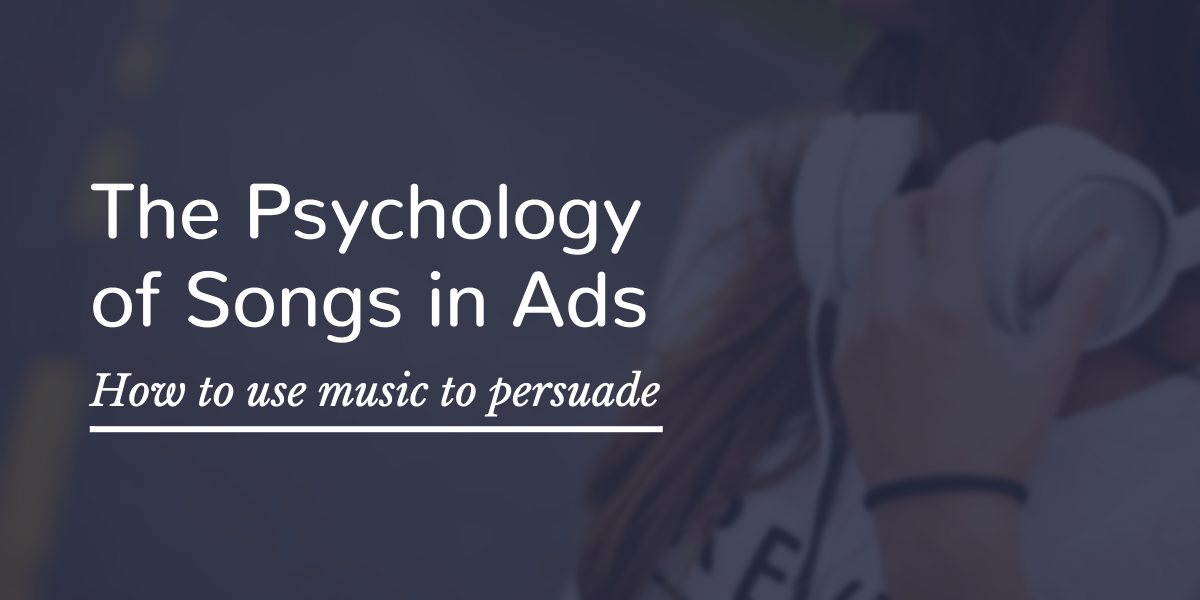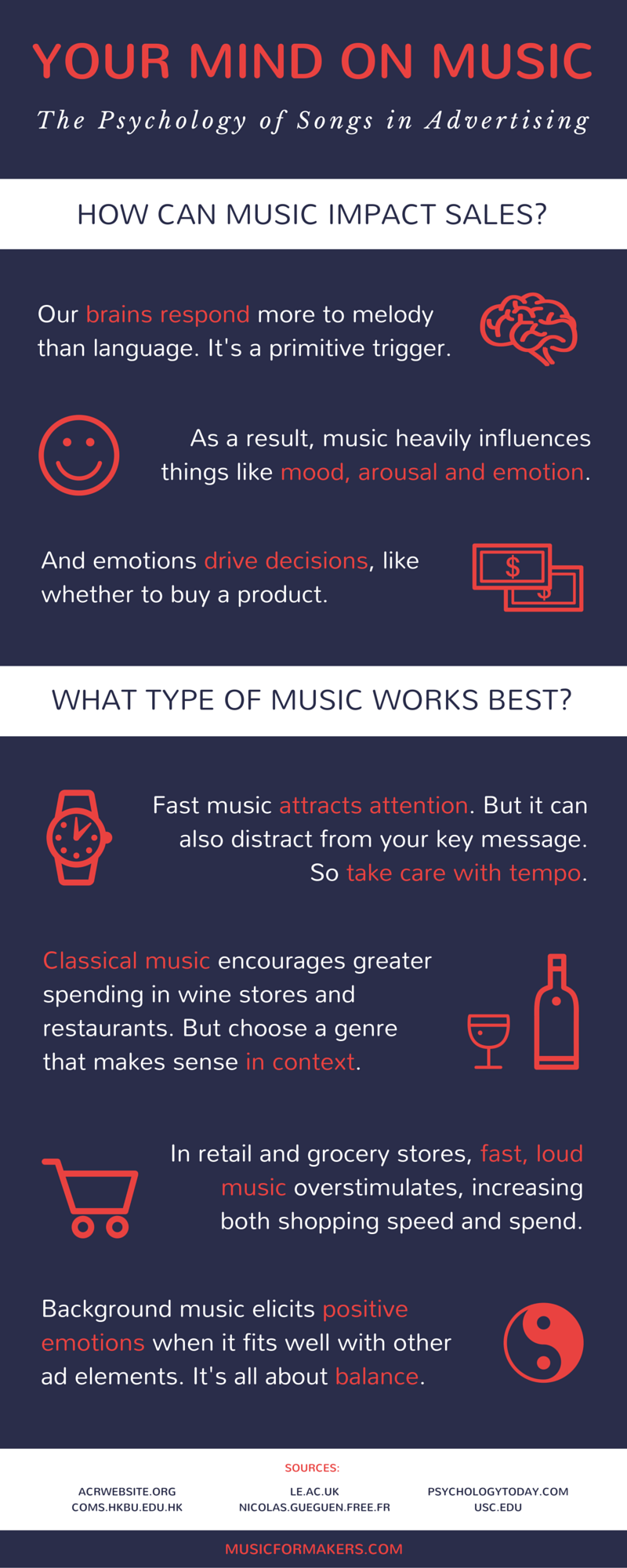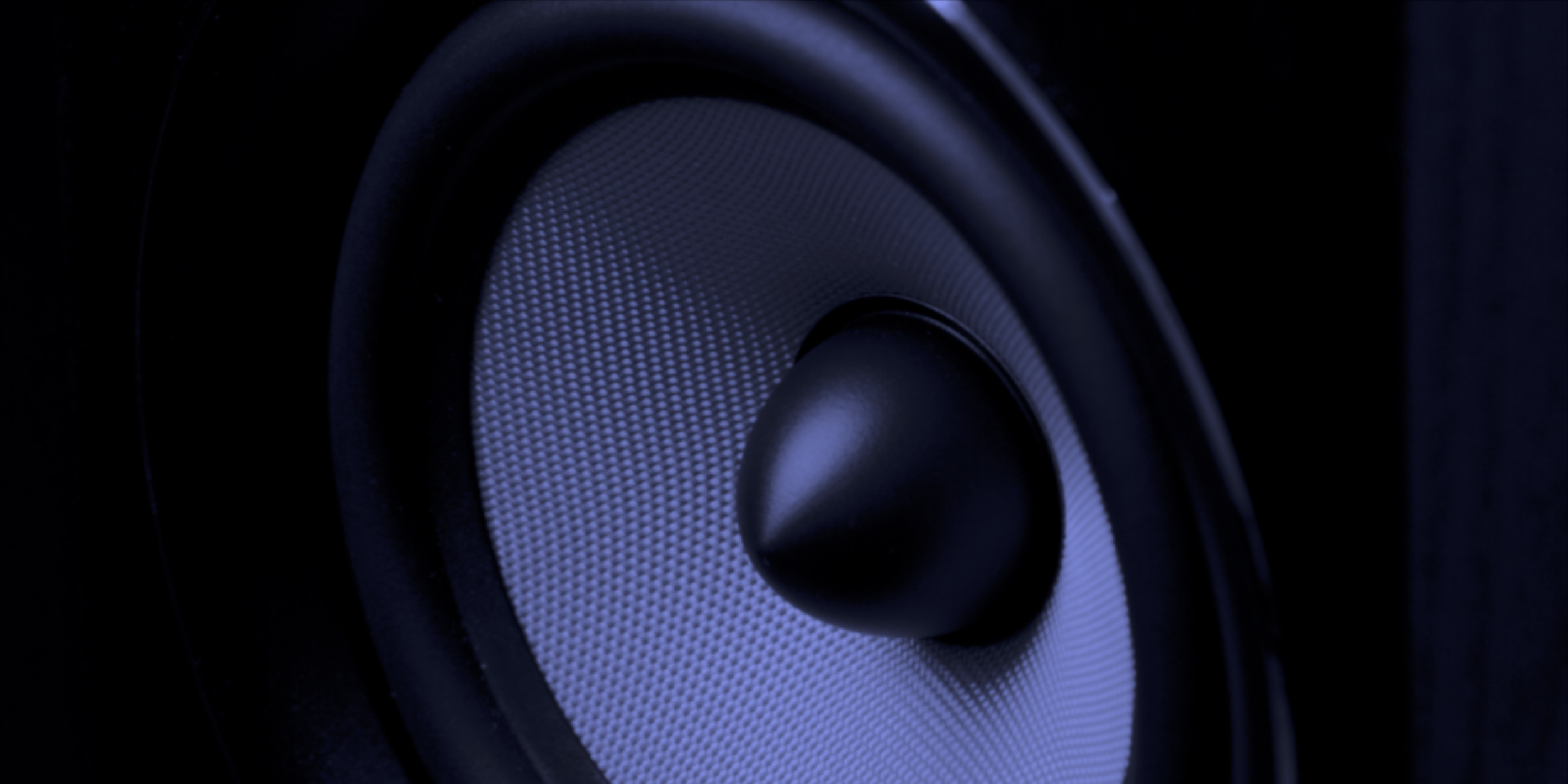Discover how music in advertising can persuade audiences of all kinds, from grocery store shoppers to restaurant patrons.
Music moves us. There’s really no denying it.
Countless studies have proven music’s profound effects on arousal, mood and emotion. In fact, our brains respond more to melody than to language.

Lately, I’ve had an itching curiosity about the power of music. Specifically, I’ve been wondering if you can use music to persuade and influence audiences.
After all, music evokes emotion, and emotions drive decisions — decisions like whether to buy a certain product. So can you use it strategically to boost sales?
Turns out, you can.
In fact, many radio and television commercial producers have built successful careers on this fact. So I did a little digging to learn what they know about the psychological effects of using music in advertising.
When is music in advertising persuasive?
In general, music seems to increase cognitive load, which is a fancy way to say it requires people to think. So when advertising features music, the audience must work harder to identify and remember the key message.
“But,” the wise marketer asks, “shouldn’t we be trying to make things as easy as possible for customers?”
Well, here’s the thing: if the music in your ads induce positive feelings, your audience may associate those warm fuzzies with your brand.
So putting music in your advertising might hurt message recall a little. But if you do it right, you’ll likely improve brand sentiment. (And we buy from brands we like.)
Recent research conducted by Nielsen confirmed the idea that music can help brands connect with consumers on an emotional level. Nielsen studied 600 television commercials to find that advertising with music has:
- 4% more creative power
- 5% more empathy power
- 3% more emotive power
- 15% more information power
… than advertising without music.
So should you use music? Yeah, probably.
But where do you start?
How to pick persuasive music for advertising
Everything from song tempo to music scale has been shown to influence a person’s thoughts, feelings and actions.
Think of music as a tool that can shape how people perceive and experience your brand.
Experts agree: Genre influences spending habits
In one study, a wine shop sold more expensive bottles when it played classical music rather than Billboard’s Top-40 playlist. A study of music in restaurants confirmed this correlation between classical music and increased spending.
So what’s going on here? I think it’s likely that customers heard the classical music — which is often associated with sophistication and more expensive tastes — and subconsciously altered their behavior to match the setting.
Of course, this doesn’t mean everyone should start using classical music in their ads. (Though, I’d love to see McDonald’s “I’m Lovin’ It” campaign set to Vivaldi’s Four Seasons.)
Context is critical.
When everything in an ad — the product, the imagery, the music, and so on — seems to work together coherently (what’s known as “musical fit”), the ad is likely to elicit positive feelings. But if there’s disharmony, attitudes toward the ad and the brand may turn negative.
Think of it like this: you wouldn’t showcase a high-end sports car and play a bluegrass track in the background, right? That would seem out of place, irrelevant. The music would be working against you.
Tempo affects the persuasive power of music, too
Should your background music be fast or slow? Studies have yielded conflicting answers.
In grocery and retail stores, loud, fast music can shorten shopping time without decreasing money spent. Similarly, fast-paced music on ecommerce websites may positively impact browsing behavior and sales.
But then there’s other research that indicates slower music in restaurants increases spending.
So there’s not a hard and fast rule on tempo. As with genre, it just depends on the situation and your objective.
Like so many other things in advertising, the “right” way to use music is relative. Your approach will likely differ from mine, and that’s perfectly fine.
The bottom line is you should use music that is interesting enough to attract your audience’s attention, but subtle — and congruent with surrounding elements — enough that it avoids becoming a distraction.
Best practices of using music in advertising
Music in advertising can be a little complicated. So I distilled this post into a simple little infographic for easier digestion. Enjoy!

Share this infographic on your website
Further reading on music in advertising
I hope you found this post insightful. If you’d like to learn more about how to use music to enhance advertising, check out: 3 Secrets of the Most Persuasive Product Videos »

